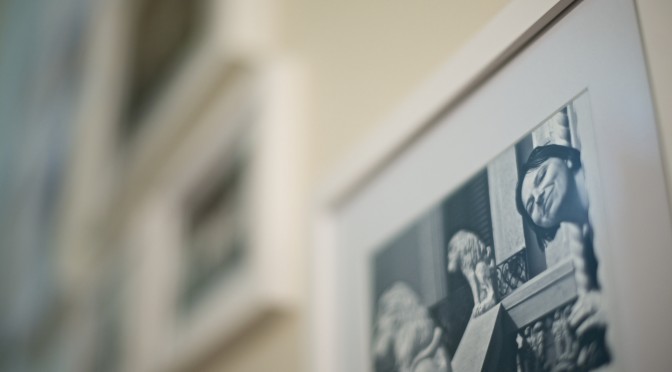Mounting is the technique used to secure a photograph to a mount or display board. There are several different methods and materials to choose from when mounting a photograph. Selection is based on several factors such as cost, convenience, equipment availability, and conservation.
Conservation
True conservation framing dictates that the mounted photo must be cleanly removable from the mount board. Museums must adhere to conservation guidelines, even though all acid free materials are used in these frames. Acids and other pollutants will eventually penetrate the frame from the air and walls and contaminate the frame, at which time the artwork must be removed and reframed with fresh materials.
For most of us, such extreme conservation rules are unnecessary, although care should be taken to ensure general household items such as rubber cement are not used for mounting. These items may contain chemicals that will harm your artwork immediately. There are several inexpensive mounting products available today that are safe for your artwork. Some products such as photo corners, mounting corners, and hinging tapes and tissues are all safe products for mounting your artwork.
Photo Corners and Archival Hinging Tissue
One of the main reasons that pictures buckle after being framed is that the image, mat, and mount board all expand and contract at different rates with changes in temperature. For this reason it is important to leave the image as free as possible to move within the picture frame. The two primary ways of achieving this are mounting with photo corners & hinging tissue. A key component of conservative framing is that the image can be completely removed from the photo frame with no change to the image. To allow the image to freely expand and contract beneath the mat, it should only be hinged at a couple of points along the top edge of the photograph as shown in the diagram. Larger images may require 3 points. How conservative the hinging method is depends on the type of adhesive used in the hinge. For true conservation, there is a special Japanese paper that is used with a water-soluble wheat or rice starch adhesive.
Picture mounting – hinging photograph to mat
One way to mount your photograph is to use acid free hinging tape or tissue such as Self Adhesive Hinging Tissue to attach the image directly to the mat. The advantage of this method is that the image will stay centered under the picture mat opening so you do not need to hinge the mat to the mount board. The disadvantage of this method is that is depending on the hinging product used, it may be difficult to change the mat. Note: If you are selling your image matted but unframed, it is recommended that you do not use this method.
Text: Frame Destination
Photo: Jamie McCaffrey

